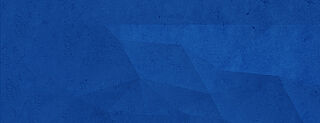|
09:00 - 10:00
|
Hannes Bernien
(University of Chicago)
A dual-species Rydberg array
Rydberg atom arrays have emerged as a leading platform for quantum information science. Reaching system sizes of hundreds of long-lived qubits, these arrays are used for highly coherent analog quantum simulation, as well as digital quantum computation. Advanced quantum protocols such as quantum error correction, however, require midcircuit qubit operations, including the replenishment, reset, and readout of a subset of qubits. A compelling strategy to achieve these capabilities is a dual-species architecture in which a second atomic species can be controlled without crosstalk, and entangled with the first via Rydberg interactions.
In this talk, I will introduce our dual-species Rydberg array consisting of rubidium (Rb) and cesium (Cs) atoms and present new regimes of interactions and dynamics not accessible in single-species architectures. I will share our recent results on interspecies interactions which we use to realize Rydberg blockade and implement quantum state transfer from one species to another. Furthermore, we generate a Bell state between Rb and Cs hyperfine qubits via an interspecies controlled-phase gate. Finally, we combine interspecies entanglement with native midcircuit readout to achieve quantum non-demolition measurement of a Rb qubit using an auxiliary Cs qubit. These techniques are crucial ingredients for scalable measurement-based protocols and real-time feedback control in large-scale quantum systems.
|
|
10:00 - 11:00
|
Henrik Dreyer
(Quantinuum)
Long-Range Entangled States in Trapped Ions from Measurement and Feed-Forward
Quantum devices have matured to the point where multipartite entanglement can be created on 30+ qubits. One important capability of these devices is the creation of long-range entangled states, both as initial states for quantum simulation and for error correction within the same devices. Unfortunately, by definition, topologically ordered states require extensive unitary circuit depths for their preparation, which places constraints on the coherence times of near-term devices. I will talk about how constant-depth protocols based on measurement and feed-forward have recently been used to prepare toric code and non-Abelian topological order on Quantinuum's H-series trapped-ion computers.
|
|
11:00 - 11:30
|
group photo (to be published on the event website) & coffee break
|
|
11:30 - 12:30
|
Ruben Verresen
(Harvard University)
Which states of matter can be prepared using measurement?
|
|
12:30 - 13:30
|
lunch
|
|
13:30 - 14:00
|
discussion
|
|
14:00 - 15:00
|
Tibor Rakovszky
(Stanford University)
Defining phases of active quantum matter
The latest generations of quantum devices are rapidly developing the technology needed to perform real-time ("mid-circuit") measurements and feedback, giving us access to highly controlled far from equilibrium "active" quantum systems. This provides a large new arena for quantum many-body physics, and in my talk I will discuss the problem of defining robust quantum phases of matter in such non-equilibrium open systems. I will formulate conditions for the stability of these phases, putting it on a similar footing to the well-established theory of zero temperature phases of gapped quantum matter. Our formulation leads to desirable features, such as the robustness of long-range correlations within the phase, and I will describe physical mechanisms that give rise to such stability. These fundamental questions in many-body physics are also closely related to the problem of quantum error correction, particularly the problem of finding self-correcting codes that do not require non-local classical communication between the quantum device and a classical processor.
TR, Sarang Gopalakrishnan, Curt von Keyserlingk: Defining stable phases of open quantum systems, ArXiv 2308.15495
|
|
15:00 - 15:30
|
coffee break
|
|
15:30 - 16:30
|
Sagar Vijay
(University of California)
The Stability of Gapped Quantum Matter and Error-Correction with Adiabatic Noise
The codespace of a quantum error-correcting code (QECC) can often be identified with the ground-space within a gapped phase of quantum matter. We argue that the stability of such a phase is directly related to a set of coherent error processes against which this quantum error-correcting code is robust: such a quantum code can recover from adiabatic quantum channels, corresponding to random adiabatic drift of code states through the phase, and with asymptotically perfect fidelity in the thermodynamic limit, as long as this adiabatic evolution keeps states sufficiently close to the initial ground-space. We further argue that when specific decoders -- such as minimum-weight perfect matching -- are applied to recover this information, an error-correcting threshold is generically encountered within the gapped phase. In cases where the adiabatic evolution is known, we explicitly show examples in which quantum information can be recovered by using stabilizer measurements and Pauli feedback, even up to a phase boundary. This provides examples in which non-local, coherent noise effectively decoheres in the presence of syndrome measurements in a stabilizer QECC.
|
|
16:30 - 17:30
|
Andreas Elben
(Caltech)
Characterizing Noisy Intermediate-Scale Quantum Dynamics: Conservation Laws and Target State Fidelities (remotely talk)
In my talk, I will present protocols and experimental results for characterizing noisy intermediate-scale quantum dynamics. Firstly, I will introduce a learning algorithm designed to discover conservation laws given as sums of geometrically local observables in unknown dynamics. This algorithm leverages the classical shadow formalism for estimating expectation values of observables to identify all such conservation laws with rigorous performance guarantees. I will present numerical experiments that illustrate the algorithm's application in the context of lattice gauge theories and many-body localization.
Secondly, I will introduce benchmarking protocols for quantum devices that rely on estimating fidelity to target states. I will particularly focus on highly-entangled quantum states generated by ergodic quantum dynamics, where emergent randomness enables efficient fidelity estimation schemes. Experimental results from a 60-atom Rydberg quantum simulator at the threshold of exact classical simulatability will be presented. Utilizing the extracted fidelity, I will also demonstrate a novel estimator for experimental mixed-state entanglement, showing that the Rydberg quantum simulator is competitive with state-of-the-art digital quantum devices performing random circuit evolution.
|
|
17:30 - 18:00
|
discussion
|
|
18:00 - 19:00
|
dinner
|

